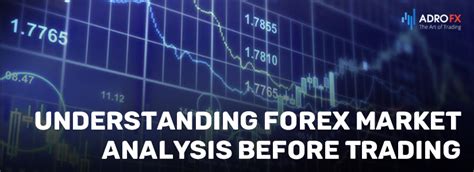The global foreign exchange market, known as Forex, is the largest and most liquid financial market in the world, offering opportunities for individuals and institutions to trade currencies. Forex trading involves the exchange of one currency for another, such as EUR/USD or GBP/USD, and has become increasingly popular due to its accessibility and potential for profit. For beginners, understanding the basics of Forex trading is essential to navigating this dynamic market with confidence. By learning how to analyze trends, manage risks, and utilize trading platforms effectively, anyone can take their first steps toward becoming a successful trader.
Understanding the Forex Market
The foreign exchange market is dynamic, fast-paced, and central to global trade and finance. Understanding its foundational concepts is essential for navigating this vast financial landscape and leveraging its potential.

What Are Currency Pairs?
Currency pairs are the cornerstone of Forex trading, representing the relative value of one currency against another. Here are the main types:
Major Pairs: Include heavily traded combinations like EUR/USD, USD/JPY, and GBP/USD.
Minor Pairs: Less frequently traded but still popular, such as AUD/JPY or EUR/GBP.
Exotic Pairs: Pairings with currencies from smaller or emerging markets, like USD/TRY or EUR/SEK.
Key insights: Major pairs often have higher liquidity and tighter spreads, while exotic pairs can offer opportunities but carry higher risks.
The Role of Market Participants
Participants in the Forex market create the flow of currency exchange and price movement. These include:
Central Banks: Influence currency value through monetary policies like interest rate adjustments.
Institutional Traders: Hedge funds and corporations trading for investment or operational purposes.
Retail Traders: Individual participants using platforms like MetaTrader 4 and TradingView to speculate on price movements.
Why it matters: Understanding participants' roles helps predict market trends and sentiment, whether bullish or bearish.
How Forex Differs from Other Markets
Unlike equities or commodities, Forex has unique features:
Operates 24 hours across different global time zones, ensuring continuous trading.
Primarily focuses on macroeconomic factors like GDP growth, inflation, and employment data rather than individual company performance.
Currency pairs like USD/CAD and GBP/USD fluctuate based on geopolitical events and central bank decisions.
Comparison of Forex and Stock Markets
| Aspect | Forex Market | Stock Market |
|---|---|---|
| Trading Hours | 24/5 (global time zones) | Limited to exchange hours |
| Liquidity | Extremely high (e.g., EUR/USD) | Varies based on stock and exchange |
| Primary Drivers | Macroeconomic factors, central bank policies | Company fundamentals, earnings reports |
| Instruments Traded | Currency pairs | Individual stocks, ETFs |
| Leverage Availability | High (often up to 50:1 or more) | Lower (commonly 2:1 to 5:1) |
Basic Tools for Forex Trading
To succeed in Forex trading, having the right tools is essential. These tools help traders analyze markets, manage risk, and execute trades effectively.
Technical indicators
Technical indicators are crucial for understanding market trends and predicting price movements. Popular examples include:
Moving Average: Smooths out price data to identify trends.
Relative Strength Index (RSI): Measures market momentum.
Bollinger Bands: Indicates market volatility.
MACD (Moving Average Convergence Divergence): Tracks price momentum.
Stochastic Oscillator: Compares a security’s closing price to its price range over a period.
Using Trading Platforms
Choosing the right trading platform can significantly impact a trader’s experience. Popular options include:
MetaTrader 4 (MT4): Ideal for beginners with robust charting tools.
MetaTrader 5 (MT5): Advanced features for multi-asset trading.
TradingView: Known for its social trading features.
cTrader: Offers a customizable interface and intuitive tools.
| Platform | Best For | Key Features |
|---|---|---|
| MetaTrader 4 | Beginners | User-friendly, Expert Advisors |
| MetaTrader 5 | Advanced traders | Multi-asset support, depth of market |
| TradingView | Social trading | Interactive charts, collaborative tools |
| cTrader | Customization | Advanced order types, APIs |
Chart Types and Analysis
Charts provide the visual representation needed for price analysis:
Line Charts: Best for beginners to identify trends.
Candlestick Charts: Offer detailed insights into open, close, high, and low prices.
Bar Charts: Combine price levels with volume information.

Economic Calendars
Economic calendars are invaluable for staying informed about major market-moving events, such as:
Interest Rate Announcements: Affects currency valuation.
Employment Data: Non-farm payroll reports often create volatility.
Inflation Data: Impacts central bank policies.
GDP Growth Figures: Indicates economic strength.
Central Bank Meetings: Provides insight into future monetary policy.
Understanding Market Sentiment
Market sentiment reflects the collective mood of traders. Recognizing these trends can help predict movements:
Bullish Sentiment: Indicates rising confidence and prices.
Bearish Sentiment: Suggests falling confidence and declining prices.
Neutral Sentiment: Stability, often before major news or events.
These tools empower traders to navigate Forex markets effectively, combining insights from technical analysis, fundamental data, and market behavior.
Forex Trading Strategies
Forex trading strategies are essential for navigating the complexities of the currency market. Each approach caters to different trading styles, timeframes, and risk tolerances, enabling traders to align strategies with their goals.
Scalping
Scalping focuses on making small profits from rapid trades within minutes. Key points:
Ideal for liquid currency pairs like EUR/USD and USD/JPY.
Requires advanced trading platforms like MetaTrader 4 for fast execution.
Demands consistent monitoring and discipline to exit quickly.
Day Trading
Day trading closes all positions by the end of the trading day to avoid overnight risks.
Best for traders who follow market sentiment trends (bullish or bearish).
Leverages fundamental analysis tools like employment data and inflation reports.
Requires awareness of economic events like central bank announcements to time trades.
Swing Trading
Swing trading captures price movements over days or weeks.
Allows traders to take advantage of technical indicators like Moving Average and MACD.
Commonly used for analyzing broader trends in AUD/USD and GBP/USD pairs.
Involves fewer trades, reducing transaction costs.
Comparison of Swing Trading and Scalping
| Feature | Swing Trading | Scalping |
|---|---|---|
| Timeframe | Days to weeks | Seconds to minutes |
| Indicators Used | Moving Average, MACD | Bollinger Bands, RSI |
| Best Currency Pairs | GBP/USD, AUD/USD | EUR/USD, USD/JPY |
| Risk Level | Moderate | High |
| Trading Frequency | Low | High |
Trend Following
This method relies on identifying and trading in the direction of a dominant market trend.
Fibonacci Retracement helps determine entry and exit points.
Works well in trending currency pairs like NZD/USD.
Often combined with position trading for long-term gains.
Risk Management Techniques
Efficient risk management is essential in Forex trading to protect capital and maximize profitability. By understanding strategies like Stop-Loss Orders and Position Sizing, traders can mitigate risks in a volatile market.

Stop-Loss and Take-Profit Orders
Step-by-step guidance ensures better implementation of these key tools:
Setting a Stop-Loss: Define the maximum allowable loss for each trade.
Establishing a Take-Profit: Determine a profit level where positions will automatically close.
Placement Tips: Use technical indicators like Bollinger Bands or Fibonacci Retracement to identify optimal levels.
Dynamic Adjustment: Adapt as market conditions change to lock in gains.
Position Sizing
Descriptive content: Position sizing determines the volume of a trade based on account size and risk tolerance. Traders often use a percentage-based model, risking 1-2% of their account per trade. By controlling exposure, traders can sustain losses without jeopardizing overall capital. For instance, a $10,000 account risking 2% would allow a $200 loss per trade.
Risk-Reward Ratio
Table of Recommended Risk-Reward Ratios Based on Trading Strategies
| Trading Strategy | Suggested Ratio | Application | Example |
|---|---|---|---|
| Scalping | 1:1.5 | Quick trades; focus on tight spreads | Risk $10 to gain $15 |
| Day Trading | 1:2 | Moderate trades over a single session | Risk $50 to gain $100 |
| Swing Trading | 1:3 | Capturing longer trends | Risk $100 to gain $300 |
| Position Trading | 1:4 or higher | Long-term investments | Risk $500 to gain $2,000 |
Using Margin Wisely
Margin amplifies both profits and risks. Traders should avoid over-leveraging by:
Understanding Margin Calls: Awareness of when brokers may liquidate positions.
Monitoring Leverage Ratios: Use conservative leverage levels like 10:1 for volatile pairs like GBP/USD.
Maintaining Adequate Equity: Avoid overcommitting capital on single trades.
Psychological Aspects of Risk Management
Success in Forex trading often depends on mental discipline.
Emotional control prevents impulsive decisions during high volatility.
Following a plan eliminates the need for reactive adjustments.
Reviewing trading journals helps identify patterns of emotional responses.
Backtesting Strategies
Evaluating strategies on historical data is a cornerstone of preparation:
Choose a Platform: TradingView or MetaTrader 5 supports advanced backtesting.
Define Parameters: Test Stop-Loss and Take-Profit orders, risk-reward ratios, and indicators.
Analyze Results: Identify what works under varying market conditions.
Refine Strategies: Continuously adjust based on backtested outcomes.
By applying these techniques, traders can minimize risks while developing robust Forex trading strategies.















